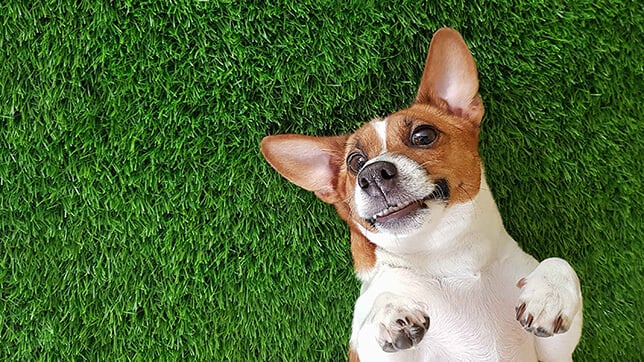17th May 2024
Frolicking through the grass is one of the joys of summer for our dogs!
Though did you know that grass seeds can pose a major health risk to your canine companion? Unfortunately, grass seeds are known to create some serious issues for our pets.
Learn how to spot symptoms of grass seed injuries, the treatments available, and – most importantly – how to prevent your dog from being harmed by grass seeds…
What are grass seeds?
From late spring to early summer, grass seeds are often found in gardens, parks, and fields. Grass seeds are tiny and arrow-shaped, which means they easily attach themselves to our dogs’ coats, paws, and ears as they brush past them.
Why are grass seeds dangerous to dogs?
Since they’re so sharp, grass seeds can burrow into a dog’s fur and pierce their skin; which causes a lot of pain. Their small size can make grass seeds difficult to find if they migrate into other areas of your dog’s body, too.
Although dogs who enjoy running through long grass and/or those who have longer or thicker coats are most at risk, it’s possible for any dog to encounter grass seeds.
Here are just a few of the potential health problems that can be caused by grass seeds:
- Allergic reactions.
- Infections.
- Respiratory issues.
- Obstructions in the digestive system.
- Damage to organs.
Symptoms caused by grass seeds
Your dog is likely to display different symptoms, depending on where the grass seed is located on, or within, their body.
Eye:
- Watery, weepy eye.
- Rubbing at their eye with a paw.
- Intense itchiness.
- Swelling.
- Pain.
Ear:
- Excessive scratching.
- Shaking their head repeatedly.
- Rubbing their ear with a paw.
- Head tilting.
- Sudden ear infection.
Nose:
- Runny nose on one side.
- Sneezing.
- Pawing at their nose.
Paw:
- Excessive licking or nibbling at their paw.
- Saliva staining.
- Swelling.
- Lameness.
Skin:
- Itchiness.
- Hives.
- Redness and/or swelling.
Stomach:
- Abdominal pain or discomfort.
- Diarrhoea.
- Vomiting.
Lungs:
- Coughing.
- Gagging.
- Breathing difficulties.
- Pneumonia.
Elsewhere:
- Non-healing wound.
- Lack of energy.
- High temperature.
Important: If you think your dog is suffering from a grass seed injury, please contact your vet for advice immediately.

Treatments for grass seed injuries
The treatment for a grass seed injury will depend entirely on its location and the severity of your dog’s symptoms.
In some cases, if the grass seed can be seen, a vet may be able to remove it and prescribe antibiotics to prevent your dog from getting an infection. However, if a grass seed has become stuck somewhere or isn’t visible, your dog may need a CT scan to locate the grass seed and require surgery to remove it.
Vets might also perform a range of tests to rule out other health concerns before confirming that a grass seed is responsible for your dog’s symptoms.
Ways to protect dogs from grass seeds
Thankfully, there are ways to help protect your dog from a grass seed injury, including:
- Thoroughly check your dog’s coat, ears, and paws for grass seeds whenever they return from spending time on grass (e.g. after a walk or playing in the garden). Remember to check in between your dog’s toes as well as the pads!
- Groom your dog daily, so you can make sure their coat is free from grass seeds.
- Stop your dog from running through long grass.
- If your dog has a long coat, get them clipped through the summer months.
- Keep any hair around your dog’s paws and ears as short as possible.
For more advice about avoiding grass seeds this spring and summer, have a chat to the vet experts over at Joii Pet Care at any time, from anywhere!
More on our dog blog
Read more news articles, opinion pieces, reviews and personal stories behind our dogs on our blog.
Need dog insurance?
Dog insurance can help cover the cost of veterinary treatment if your dog gets injured or falls ill.
We know pets
Our pets are part of the family. To achieve our vision of a better future for pets everywhere, we work with our partners, vets, and other veterinary professionals who are pioneering the latest advancements in animal care. Our campaigns, articles, and events are crafted to support, educate, and celebrate pet owners, while our policies are designed to provide peace of mind at an affordable price.
Yet our policies don’t just protect against the unexpected – they have purpose, too.
Since we were founded over 25 years ago, we've provided industry-leading policies that protect the nation’s pets, while also making a difference to animal welfare and our planet. Thanks to you, our policyholders, we've donated over £9 million to more than 830 animal welfare charities and conservancies, helping to support vulnerable pets and wildlife around the world.
We’re proud to be wildly different. Are you?
